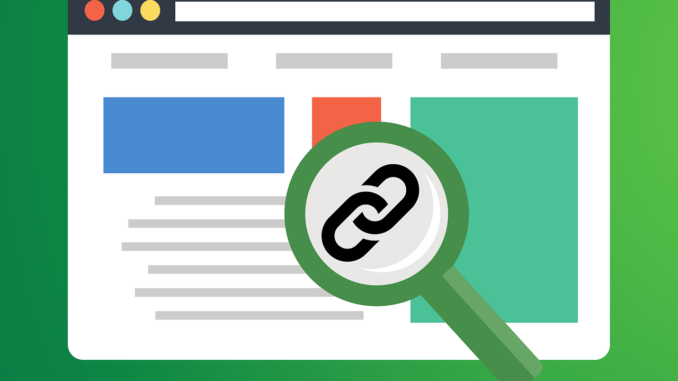
 If you’ve ever wondered how to make those long, messy affiliate links look clean and trustworthy, without spending a dime, you’re in the right place. Figuring out how to cloak affiliate links for free can feel like cracking a secret code, especially when search engines are smarter than ever. In this guide, I’ll walk you through what cloaking affiliate links means, why it’s a game-changer for your online projects, and how you can do it yourself with zero cost. Expect practical tips, real-world examples, and a sprinkle of tech know-how to help you boost clicks and protect your earnings, all while staying on the right side of SEO rules.
If you’ve ever wondered how to make those long, messy affiliate links look clean and trustworthy, without spending a dime, you’re in the right place. Figuring out how to cloak affiliate links for free can feel like cracking a secret code, especially when search engines are smarter than ever. In this guide, I’ll walk you through what cloaking affiliate links means, why it’s a game-changer for your online projects, and how you can do it yourself with zero cost. Expect practical tips, real-world examples, and a sprinkle of tech know-how to help you boost clicks and protect your earnings, all while staying on the right side of SEO rules.
Contents
- 1 What Does It Mean to Cloak Affiliate Links?
- 2 Why Should You Mask Affiliate URLs?
- 3 How to Hide Affiliate Links for Free: Step-by-Step
- 4 Top Free Tools to Cloak Affiliate Links
- 5 How to Optimize Cloaked Affiliate Links for SEO
- 6 FAQ: Your Top Questions About Hiding Affiliate Links
- 7 Actionable Tips to Start Cloaking Affiliate Links Today
- 8 Conclusion: Master How to Cloak Affiliate Links for Free
What Does It Mean to Cloak Affiliate Links?
Picture this: You’re sharing a link to an awesome gadget on your blog, but it’s a mile long with random numbers and symbols. Not exactly clickable, right? Cloaking affiliate links means hiding the original, ugly URL behind a shorter, friendlier one, like turning https://www.example.com/affiliateid12345 into https://yourblog.com/gadget-deal. It’s not about tricking anyone; it’s about making links look legit and boosting your tech cred.
With privacy-first algorithms and AI-driven search engines, cloaking done right is a must for affiliate marketers. It’s a simple tweak that can make your links more appealing while keeping your commissions safe from sneaky thieves.
Why Tech Fans Need to Hide Affiliate Links
As a tech-savvy beginner, you’re likely dabbling in affiliate marketing to monetize your passion for gadgets, software, or gear. But here’s the catch: uncloaked links can scare off readers, lower your click-through rates (CTR), and even let others swipe your earnings by swapping out your affiliate ID. Cloaking solves these pain points, giving you control and confidence in your side hustle.
Why Should You Mask Affiliate URLs?
Let’s break it down. The digital landscape in 2025 is all about trust, user experience, and smart SEO. Here’s why cloaking your affiliate links is a no-brainer:
- Boost Click-Through Rates: Clean, branded links (like yourdomain.com/recommend) look trustworthy, encouraging more clicks.
- Protect Your Commissions: Hide your affiliate ID to stop others from stealing your hard-earned cash.
- Stay SEO-Friendly: Properly cloaked links align with 2025 search engine rules, avoiding penalties for spammy tactics.
- Simplify Management: Update one cloaked link instead of hunting down every instance on your site.
Think of it like upgrading your tech toolkit, cloaking makes your affiliate game sharper and more efficient.
What Happens If You Don’t Shorten Affiliate Links?
Not cloaking? You’re leaving money on the table. Long, exposed links can tank your CTR, studies show users are 25% less likely to click unbranded URLs. Worse, unethical marketers can hijack your affiliate ID, costing you commissions, with Google’s focus on user intent, neglecting this step could also hurt your site’s reputation.
How to Hide Affiliate Links for Free: Step-by-Step
Ready to cloak like a pro, without breaking the bank? Here’s how to cloak affiliate links for free, tailored for tech enthusiasts just starting out. No fancy coding skills needed!
Method 1: Shorten Affiliate Links with Free Tools
Link shorteners like Bitly or TinyURL are your first stop. They’re free, fast, and perfect for beginners. Here’s how:
- Sign up for a free account on Bitly.com.
- Paste your ugly affiliate link (e.g., https://techstore.com/aff=yourid123).
- Generate a short link (e.g., bit.ly/techdeal).
- Share it on your blog or social media!
Pro Tip: Customize the slug (the part after “bit.ly/”) to match your brand, like bit.ly/YourTechPick. It’s still free and looks slick.
Method 2: Mask Affiliate URLs with Website Redirects
If you’ve got a WordPress site (and most tech enthusiasts do), you can cloak links using redirects. It’s free and gives you full control. Here’s the rundown:
- Log into your WordPress dashboard.
- Install a free plugin like “Redirection” (no coding required).
- Add a new redirect: Set the source URL (e.g., yourdomain.com/gadget) and the target URL (your affiliate link).
- Save it, and test the link!
This method rocks because it uses your domain, building trust and brand recognition. Plus, you can track clicks right in the plugin.
Method 3: Manually Cloak Affiliate Links with .htaccess
Feeling adventurous? If you’re comfy with tech tinkering, use your site’s .htaccess file. Here’s a quick example:
RewriteEngine On
Redirect 301 /cool-gadget https://techstore.com/aff=yourid123Upload it via FTP to your site’s root directory. It’s free, but test it first, mistakes can break your site!
Top Free Tools to Cloak Affiliate Links
Here’s a handy list of free tools to get you started. I’ve tested these myself, so you’re in good hands:</
- Bitly: Easy shortening with basic analytics.
- TinyURL: Super simple, no account needed.
- Redirection (WordPress): Free plugin for custom redirects.
- Short.io: Free tier with branded links.
These tools align with focus on user-friendly, transparent marketing, no black-hat tricks here!
How to Optimize Cloaked Affiliate Links for SEO
Google’s algorithms love transparency and user value. Here’s how to cloak links without crossing the line:
- Use “nofollow” or “sponsored” Tags: Add rel=”sponsored” to your links to tell search engines they’re affiliate links.
- Avoid Deception: Don’t show one page to bots and another to users, that’s black-hat cloaking and a penalty magnet.
- Optimize for Intent: Pair cloaked links with helpful content, not just sales pitches.
Stick to these rules, and you’ll keep your site ranking high while cloaking like a champ.
Real-World Example: How to Mask Affiliate Links Right
Imagine you’re promoting a new VR headset. Your affiliate link is https://vrstore.com/aff=techfan123. Using Bitly, you cloak it as bit.ly/VRTechPick and embed it in a review post. Readers click, you earn, and Google’s happy because it’s clear and useful. Win-win!
FAQ: Your Top Questions About Hiding Affiliate Links
What’s the Easiest Way to Cloak Affiliate Links for Free?
Use a free link shortener like Bitly or TinyURL. Just paste your link, shorten it, and share, done in seconds!
Does Masking Affiliate URLs Hurt SEO?
No, not if done right. Add “sponsored” tags and avoid deceptive tactics to stay SEO-safe.
Can I Hide Affiliate Links Without a Website?
Yes! Free tools like Bitly work without a site, just sign up and start cloaking.
Why Do Uncloaked Affiliate Links Get Fewer Clicks?
Uncloaked links look spammy. Cloak them with a branded URL to boost trust and clicks.
Actionable Tips to Start Cloaking Affiliate Links Today
Ready to level up? Try these:
- Pick one free tool (like Bitly) and cloak your top 3 affiliate links today.
- Add a “sponsored” tag to every cloaked link for SEO compliance.
- Test your cloaked links, click them yourself to ensure they work.
Start small, see the results, and scale up. You’ll be amazed at the difference!
Conclusion: Master How to Cloak Affiliate Links for Free
Cloaking affiliate links doesn’t have to be complicated or expensive. With free tools and a little know-how, you can make your links pop, protect your earnings, and keep your tech blog humming. Whether you’re using Bitly for quick wins or setting up redirects on your site, mastering how to cloak affiliate links for free is your ticket to smarter marketing. So, what are you waiting for? Try it today and watch your clicks soar! Want more tech tips?, Visit Google’s Webmaster Guidelines for the latest SEO rules.